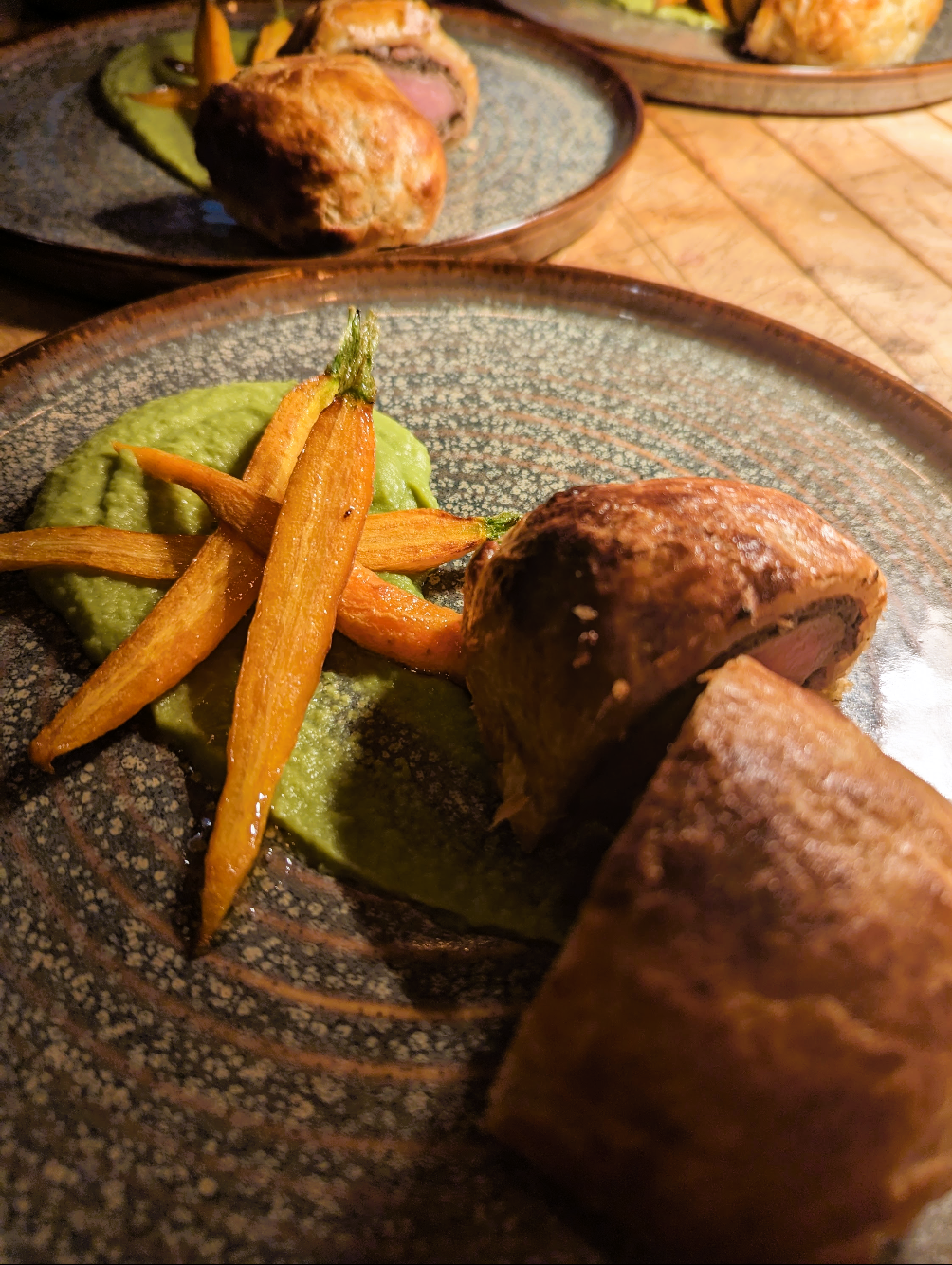A self-described “military brat,” Michel Gaumond says he “found food” as a kid going to school in Germany, recounting a single instant where that appreciation was forged.
“During a school field trip, I had some bread with Westphalian ham and Gruyere baked right into it,” he says.
“I bought a loaf with money my parents had given me for the trip and finished the whole thing on the bus home. How could something be so delicious?”
The chef and owner of Maker Feed Co. (MFCo.) located in Cumberland, would also tell his sister that one day he wanted a house that had a room full of pickles and cured meats.
“And now I have a restaurant that does that.”
After a year of culinary school, Gaumond left the formal learning environment and returned to the hurly-burly of professional cooking.
“I was learning way more on the line at restaurants,” he says. “The cooks may have been characters, but they took their craft seriously. And I love the camaraderie.”
In parsing his restaurant’s name – Maker Feed Co. – Gaumond describes a straightforward connection between the cooks, the producers and farmers, butchers and fishmongers (the “makers”) and the people they feed (his customers).
His business partner has a network of farmers that the kitchen draws on and keeps the menu as local and as responsibly produced as possible; “farm-to-table” restaurants are no longer de rigeur: they are today commonplace at a certain echelon of dining and that’s the approach here.
With its eclectic décor inside, the old building was originally an apothecary’s store and personal residence – “there are lots of stories about the property,” says Gaumond – and has been a couple of restaurants before he opened MFCo. during the business roller coaster of the pandemic in 2020.
There are 65 seats over three floors with capacity doubling with summertime patios. Gaumond calls MFCo. a destination dining spot with 30 per cent of his customers travelling from Ottawa and Montreal.
The kitchen cooks what you’ll find at a French bistro. According to Gaumond, he likes the relative simplicity of the cuisine that then might branch off into something Vietnamese or Moroccan, but there are French connections there too.
The current spring menu is a half-dozen appetizers and soups and a main-course lineup of bistro classics: confit, moules-frites, beurre blanc, sauce Béarnaise – the offspring of “Mother Sauce” Hollandaise with butter, egg yolk, vinegar and herbs.
Salade Niçoise has a surf-tweak of tuna and roast sardine, plus there’s flat iron steak-frites with Bordelaise.
Citing that there are not a lot of similar menus in the area, it’s a niche Gaumond says they strive to fill.
“At the restaurants I’ve been to recently, it’s like everyone is being too clever. I want people to read the menu here and know what will be on their plate. We make that in our style to taste really good.”
Consider the filet de bœuf en croûte – Beef Wellington, “one of the most classic dishes,” Gaumond says, that many of those travelling diners are seeking.
Pinning down the origin of the dish is impossible and few, if any, true recipes are extant, but its history is nevertheless interesting: it’s often credited as being a traditional and bona fide English dish named for the Duke of Wellington.
For all his maniacal TV-persona ranting, chef Gordon Ramsay is an extraordinary cook with several Michelin-starred restaurants who, in his “Master Class,” prepares a perfect Beef Wellington.
His recipe includes Dijon mustard, some prosciutto and a chive crêpe to help keep the pastry from getting soggy, along with the traditional mushroom duxelles.
But the truth is that cooks have been packing ingredients into pastry for more than four hundred years.
In 1599, “pie-cruster eater” was a term of disparagement, and in aristocratic Elizabethan residences, any number of proteins were cooked in thick, tough pastry shells called a “coffin,” which was cracked open and discarded (or fed to the dogs that “worked” in the kitchens) and the meaty contents inside served and eaten.
In France, filet de bœuf en croûte is a chunk of beef cooked in pastry that, given historical international relations, certainly wouldn’t be honouring a Brit like Arthur Wellesley.
The MFCo. version has a layer of prosciutto inside to add some saltiness, Gaumond says. The time-consuming puff pastry is sourced from an outside producer which he says is an excellent pastry that is difficult to make consistently.
“Our kitchen is very hot, especially in summer,” he says. “We once made our own, but with the inconsistent heat and humidity in here, it’s hard to get it perfect.”
And cooks strive for that perfect dish.
Beef tenderloin is trimmed and portioned before it is cooked sous vide to a rare 110F; the Wellingtons are then “reverse” seared (rather than at the start of cooking), cooled and finally swaddled in their pastry awaiting the finishing cook.
“The Wellington is baked to order, and it takes about 30 minutes to get the golden-brown pastry and a medium-rare centre,” says Gaumond.
The MFCo. menu changes regularly says Gaumond, adding that they are “never the same restaurant.”
“We try to keep it fresh and play with different foods and how we cook what we get from the farmers without being too clever.”
However, like the historic dish itself, Gaumond says the Wellington is a menu mainstay for the time being.
“There’s something comforting about filet de bœuf en croûte,” he says. “It’s a meat and potatoes meal with our parsnip purée and a nice rich mustard sauce. And it’s one of the only Wellingtons around. We can’t take it off the menu. It has become a staple.”
Food writer Andrew Coppolino lives in Rockland. He is the author of “Farm to Table” and co-author of “Cooking with Shakespeare.” Follow him on Instagram at @andrewcoppolino.



